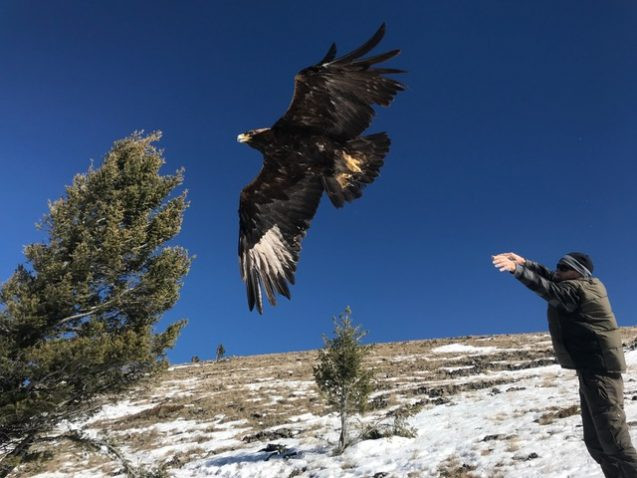A New Global Archive Helps Researchers Chart Changes in Arctic Animals' Behavior
Researchers from around the world have established a new archive of data documenting changes in the movements of animals in the far north.
By
Earth Institute
November 05, 2020

Warmer winters, earlier springs, shrinking ice and increased human development: The Arctic is undergoing dramatic changes that are affecting native animals. Researchers from around the world have now established an archive of data documenting these changes. Already, studies based on its data have revealed large-scale patterns in the movements of golden eagles, bears, caribou and other creatures that should help lay the basis for greater understanding of ongoing ecological changes in the far north. The archive is described in an article this week in the journal Science.Researchers have long been observing the movements of far northern animals, mainly via signals from trackers affixed to various species. But until now, they have not had any central source to access data on a global scale.To address this problem, an international team established a NASA-funded global data bank, covering the circumpolar Arctic and subarctic regions. Researchers from more than 100 universities, government agencies and conservation groups across 17 countries are involved in the archive, which is hosted by the Max Planck Institute. It currently contains over 200 projects with the movement data of more than 8,000 marine and terrestrial animals from 1991 to the present. “Our goal is to use the archive to build a global community across institutions and political boundaries,” said Martin Wikelski, director at the Max Planck Institute.A researcher releases a golden eagle after affixing a tracking device. A new archive has assembled animal-movement data from a wide variety of studies in the far north. (Bryan Bedrosian)“The thing about any individual study is, it is super expensive to collect data. It’s usually done on just a handful of animals, and if you’re lucky, you’ll only get a few years of information,” said Natalie Boelman, an earth scientist at Columbia University’s Lamont-Doherty Earth Observatory. “When you get people to put those individual studies into an archive that is formatted consistently, suddenly you can combine multiple datasets looking at different populations and species. You can look at the long term. And so you can summon up the statistics you need to know if something significant is happening.” Boelman led a NASA-funded study called Animals on the Move that led to the creation of the archive. She has coauthored a variety of recent studies of animals including robins (which are now migrating to the north 12 days earlier than in the 1990s), moose, wolves, mountain sheep and caribou. The data from those studies is included in the archive.Other researchers have already made discoveries by bringing together data and expertise using the archive. They paint a complex picture of how climate and other factors may be affecting wildlife.Arctic animals of all kinds face a fast-changing environment that may be shifting their seasonal behavior. Here, a lone barren-ground caribou on the tundra of Canada’s Northwest Territories. (Kevin Krajick)In one study, researchers examined the movements of more than 100 golden eagles from 1993 to 2017. They found that immature birds migrating north in the spring have been arriving earlier following mild winters. However, the arrival time of adults has remained rather constant, regardless of conditions at their breeding grounds. The observations may have implications for the birds’ success at breeding. “Our approach revealed the importance of assessing data that span generations and decadal climate patterns,” said Scott LaPoint, a study coauthor and adjunct researcher at Lamont-Doherty based at upstate New York’s Black Rock Forest.A second study of more than 900 female caribou from 2000 to 2017 found that members of the most far-northerly ranging herds are giving birth earlier in the spring, while more southerly populations have not shown the same change. A third analysis, looking at the movement speeds of black bears, grizzly bears, caribou, moose and wolves from 1998 to 2019, showed a wide variety of responses among the different species to changes in seasonal temperatures and winter snow conditions.In addition to the hundreds of studies already included in the archive, more material is being continually added, as data are transmitted from animals in the field and more researchers join. “We are also providing a much-needed baseline of past behaviors and movements”, said one of the project’s leaders, Sarah Davidson of the Max Planck Institute. The project is also led by Gil Bohrer, a professor at the Ohio State University,Adapted from a press release by the Max Planck Institute.Read a story about the project from Ohio State University
